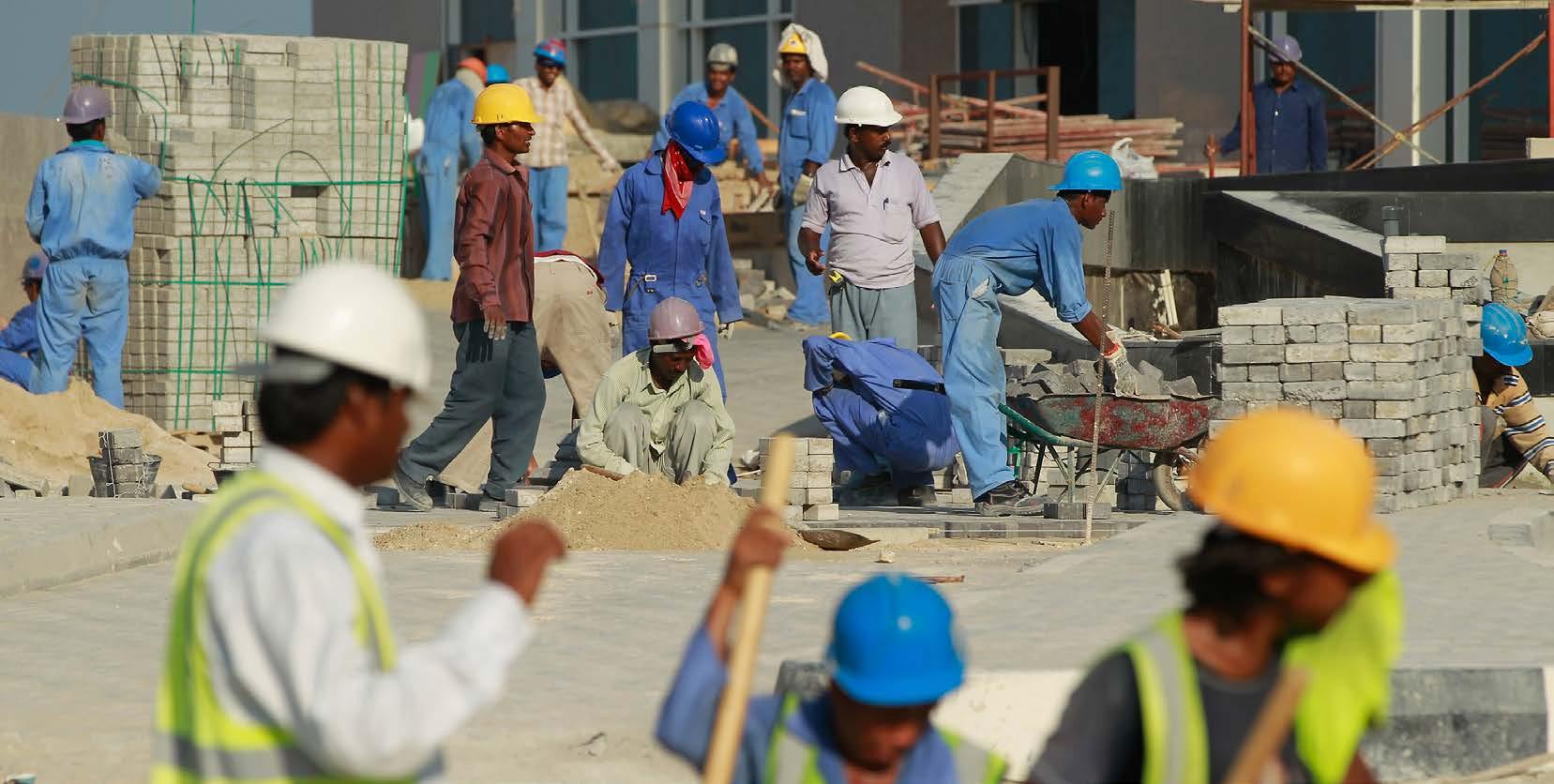
4 minute read
2. BACKGROUND
The rights of migrant workers in Qatar have been in the global spotlight for more than a decade, ever since the country was awarded the right to host the FIFA World Cup 2022 – the first time the tournament will be held in the Middle East. There have been numerous controversies and scandals linked to persistent reports of labour exploitation and abuses as the country embarked on a vast infrastructure building programme in preparation for this tournament.
In the decade since being announced as the World Cup host, Qatar's population has grown by almost two thirds, with the number of migrant workers in the country increasing substantially.34 Today, Qatar is home to over two million men and women migrant workers predominantly from Asia and Africa, who have passed medical tests and paid hefty recruitment fees to migrate to work in Qatar in construction, hospitality or domestic service.35 They make up over 90% of the country’s labour force and have over the past decade vastly contributed to the country’s economy and development.36 Without their hard work, Qatar’s bid to host the FIFA World Cup 2022 would have remained out of reach.
However, while many migrant workers were able to take advantage of the economic opportunities offered to them, others have fallen victim to the country’s exploitative ‘kafala’ sponsorship system. For decades this system has effectively bound foreign workers to their employers, who act as their official sponsor (or “kafeel”) from the moment they enter the country and throughout their period of employment. The kafala system has long been a key element in facilitating exploitation and labour abuse, sometimes amounting to forced labour.37
Despite recent reforms, elements of this system still exist and grant enormous powers to employers, whose authorisation remains necessary for migrant workers to enter the country, as well as to work, and get and renew their residence permits. If their employers cancel or fail to renew their visa or report them as having “absconded” from their job, migrant workers become irregular in the country and at risk of arrest and deportation.38 Until 2020, workers even needed their employer’s permission to leave the country or change jobs.39 Compounding the issue, the vast majority of low-income migrant workers have paid large and often illegal recruitment fees to secure their jobs, and have taken out debt to do so.40 Amnesty International and other organisations have documented abuses connected to this system over many years.41
34 Qatar Planning and Statistics Authority, Monthly Figures on Total Population, available at https://www.psa.gov.qa/en/statistics1/ StatisticsSite/pages/population.aspx?p=1 35 Amnesty International, Nepal: Turning people into profits: abusive recruitment, trafficking and forced labour of Nepali migrant workers, 2017, https://www.amnesty.org/en/documents/asa31/6206/2017/en/ 36 Qatar Planning Statistics Authority, Labour Force sample survey 2019, June 2020, p.10, https://www.psa.gov.qa/en/statistics/Statistical%20 Releases/Social/LaborForce/2019/statistical_analysis_labor_force_2019_En.pdf 37 Amnesty International, Reality Check: Countdown to 2022 World Cup – Migrant workers in Qatar (Index: MDE 22/3297/2020), 18 November 2020. 38 Ibid. 39 Amnesty International, New laws to protect migrant workers are a step in the right direction, 30 August 2020, https://www.amnesty. org/en/latest/news/2020/08/qatar-annoucement-kafala-reforms/ 40 Amnesty International, Nepal: Turning people into profits: abusive recruitment, trafficking and forced labour of Nepali migrant workers, 2017, https://www.amnesty.org/en/documents/asa31/6206/2017/en/ 41 See for example, Amnesty International, The dark side of migration: Spotlight on Qatar’s construction sector ahead of the World Cup (Index: MDE 22/010/2013), 18 November 2013 and The ugly side of the beautiful game: Exploitation of migrant workers on a Qatar 2022 World Cup Site (Index: MDE 22/3548/2016), 30 March 2016 and ITUC, Qatar 2022 World Cup risks 4000 lives, warns International Trade Union Confederation, 27 September 2013, https://www.ituc-csi.org/qatar-2022-world-cup-risks-4000, and Human Rights Watch, Building a Better World Cup Protecting Migrant Workers in Qatar Ahead of FIFA 2022, 12 June 2012, https://www.hrw.org/report/2012/06/12/building-better-world-cup/ protecting-migrant-workers-qatar-ahead-fifa-2022.

Foreign workers lay an entrance road at the construction site of a new hotel in the new City Center and West Bay district on October 24, 2010 in Doha, Qatar.(Photo by Sean Gallup/Getty Images). © 2010 Getty Images
QATAR IS HOME TO OVER 2 MILLION
MEN AND WOMEN MIGRANT WORKERS
Until recently, Qatar resisted meaningful reforms of the kafala system, despite pressure from human rights organisations, trade unions and the media. Then, in 2017 it signed a landmark agreement with the International Labour Organization (ILO) to tackle widespread labour exploitation and “align its laws and practices with international labour standards”.42 Since then, Qatar has indeed introduced important reforms dismantling key elements of the kafala system by allowing migrant workers to leave the country and change jobs without the permission of their employers. Qatar also established new labour courts to expedite workers’ access to justice and introduced a new non-discriminatory minimum wage.43
Qatar’s labour reforms have offered real hope that it may be possible to end widespread labour abuse in the country. While there have been improvements, weak implementation and enforcement of these reforms mean that progress has been slow and legal changes have not yet fully translated into better protection for all migrant workers. Many migrant workers still pay abusive recruitment fees, face delayed or unpaid wages, work excessively long hours, struggle to access justice and remain at the mercy of unscrupulous employers allowed to commit abuses with impunity.44
42 Technical cooperation programme agreed between the Government of Qatar and the ILO (2018–20), p.31, https://www.ilo.org/ wcmsp5/groups/public/---ed_norm/---relconf/documents/meetingdocument/wcms_586479.pdf 43 Amnesty International, Reality check: The state of migrant workers’ rights with four years to go until the Qatar 2022 World Cup (Index: MDE 22/9758/2019) and Reality Check: Countdown to 2022 World Cup – Migrant workers in Qatar (Index: MDE 22/3297/2020). 44 Ibid.






